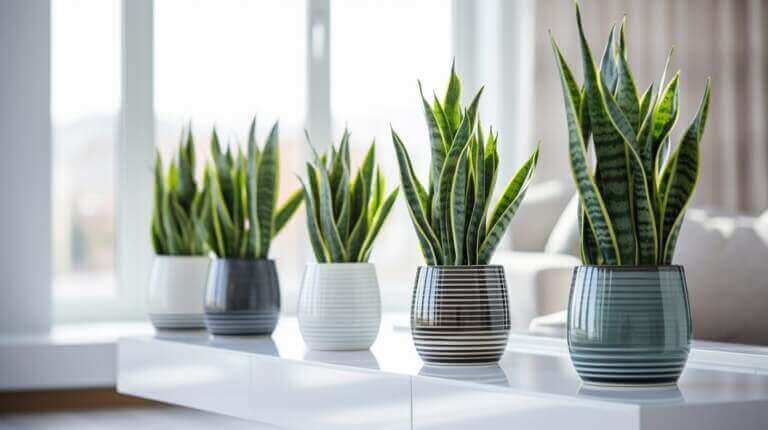Flaming Katy, also known as kalanchoe blossfeldiana, is a popular indoor succulent plant known for its vibrant flowers. However, one common issue that flaming katy owners face is root rot, which can be caused by overwatering and poor drainage. To save your flaming katy from root rot, there are several steps you can take.
First, ensure that you position your plant in a light, sunny spot with average warmth. Flaming katy prefers well-draining soil, so make sure to use a pot with drainage holes and a well-draining soil mix. Additionally, avoid overwatering your plant and allow the soil to dry out between waterings. Pruning dead or dying leaves and flowers can also help improve the plant’s overall health. Finally, if your flaming katy does develop root rot, you may need to propagate the healthy parts of the plant to save it from further damage.
Key Takeaways:
- Flaming Katy, or kalanchoe blossfeldiana, is a popular indoor succulent plant with vibrant flowers.
- Root rot can occur due to overwatering and poor drainage.
- Position your plant in a light, sunny spot with well-draining soil.
- Avoid overwatering and allow the soil to dry out between waterings.
- Pruning dead leaves and flowers can help improve the plant’s health.
- If root rot occurs, propagate the healthy parts of the plant to save it.
Best Practices for Watering and Drainage
Proper watering and drainage are essential for maintaining the health of your flaming katy and preventing root rot. Follow these best practices to ensure optimal watering and drainage:
1. Watering
When it comes to watering your flaming katy, less is more. Overwatering is a common cause of root rot in succulent plants. Only water your plant when the soil is dry to the touch, and make sure to allow the soil to dry out completely between waterings. This will prevent water from sitting in the bottom of the pot, which can lead to root rot.
When watering, use room temperature tap water and water the soil directly. Avoid getting water on the leaves, as this can create a moist environment that encourages the growth of fungus and bacteria.
2. Drainage
Proper drainage is crucial for preventing waterlogged soil, which can suffocate the roots and cause root rot. Make sure your pot has a drainage hole to allow excess water to escape. If you have a decorative pot without drainage, consider placing your flaming katy in a well-draining container inside the decorative pot. After watering, remove any excess water that collects in the decorative pot to prevent it from sitting in the soil.
Additionally, using a well-draining soil mix is important for maintaining proper drainage. Avoid heavy, compacted soils that retain moisture. Instead, opt for a mix specifically formulated for succulent plants or create your own by combining regular potting soil with perlite or sand to improve drainage.
By following these best practices for watering and drainage, you can help your flaming katy thrive and prevent the onset of root rot.
| Watering | Drainage |
|---|---|
| – Water when soil is dry to the touch | – Use a pot with a drainage hole |
| – Allow soil to dry out completely between waterings | – Consider using a well-draining container inside a decorative pot |
| – Use room temperature tap water | – Remove excess water from decorative pot after watering |
| – Water the soil directly, avoiding the leaves | – Use a well-draining soil mix |
Pruning and Propagation Tips
Pruning and propagation are essential practices for maintaining the health and growth of your flaming katy, also known as kalanchoe blossfeldiana. By regularly pruning dead flowers and leaves, you can prevent the decay from spreading and degrading the overall health of your plant. Use clean and sharp scissors or shears to make clean cuts, ensuring minimal damage to the plant.
Propagating your flaming katy is another effective way to save it from root rot and create new plants. One popular method is through stem cuttings. To propagate, take a healthy stem from the parent plant and remove any leaves from the bottom. Place the cutting in a well-draining soil mix, ensuring it has a chance to develop roots. It is best to do this during the flowering period for increased success.
During the propagation process, make sure to keep the cutting in a warm and humid environment to encourage root growth. With proper care and attention, the cutting will eventually establish itself as a new plant. This allows you to expand your collection of flaming katy plants while ensuring the well-being of your existing ones.
Remember to handle the plant parts with care during both pruning and propagation. By incorporating these practices into your plant care routine, you can promote healthy plant growth, prevent root rot, and enjoy the vibrant beauty of your flaming katy for years to come.
FAQ
How can I prevent root rot in my flaming katy?
To prevent root rot in your flaming katy, ensure it is positioned in a light, sunny spot with average warmth. Use well-draining soil and a pot with drainage holes. Avoid overwatering and allow the soil to dry out between waterings. Prune dead or dying leaves and flowers to improve overall plant health.
How often should I water my flaming katy?
Only water your flaming katy when the soil is dry to the touch. Allow the soil to dry out between waterings to prevent overwatering. Water the soil directly and avoid getting water on the leaves. Use room temperature tap water and ensure the pot has a drainage hole to allow excess water to escape.
What should I do if my flaming katy develops root rot?
If your flaming katy develops root rot, you may need to propagate the healthy parts of the plant to save it from further damage. Cut away the affected roots and propagate the healthy parts following the pruning and propagation tips mentioned above.







